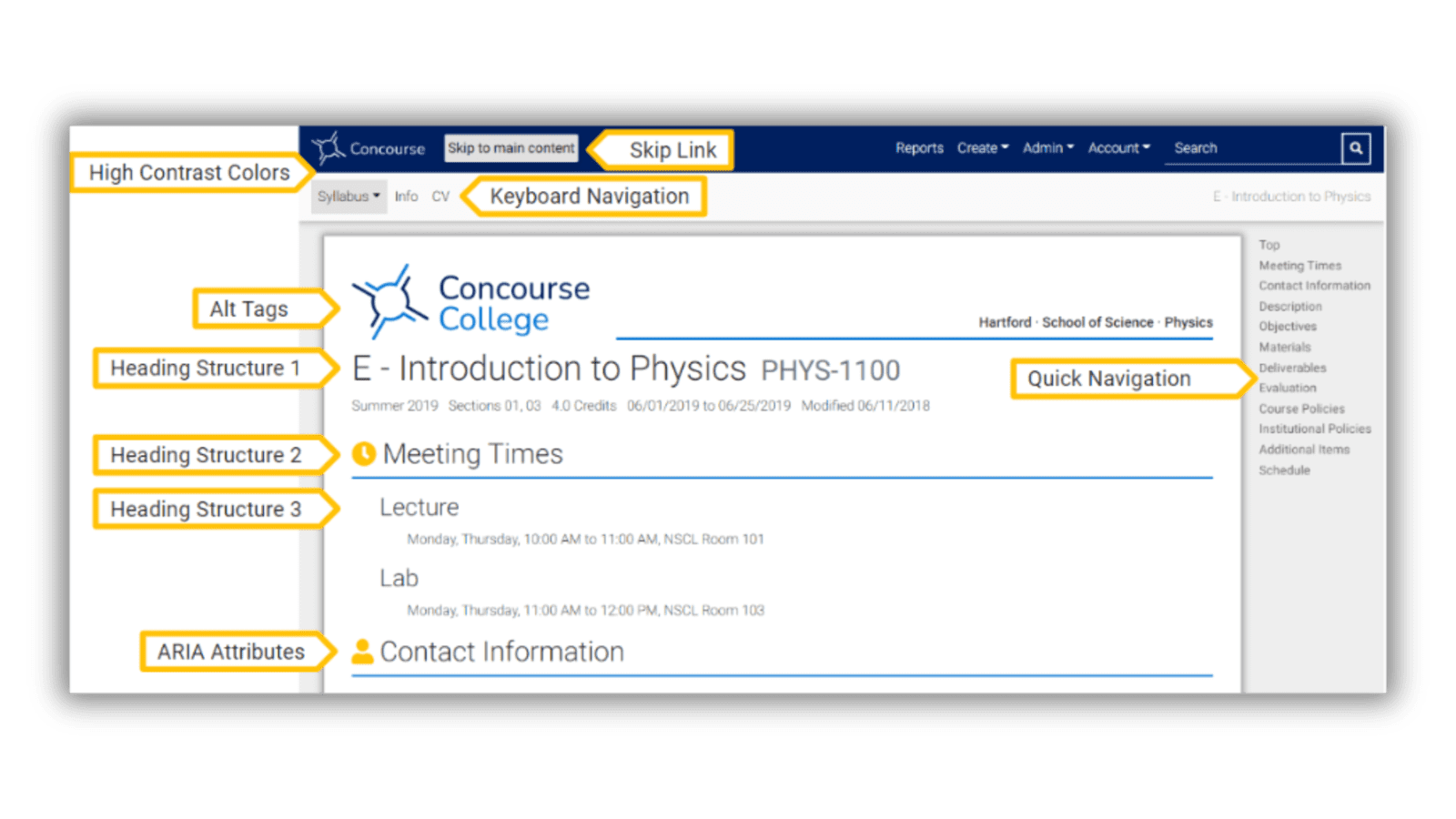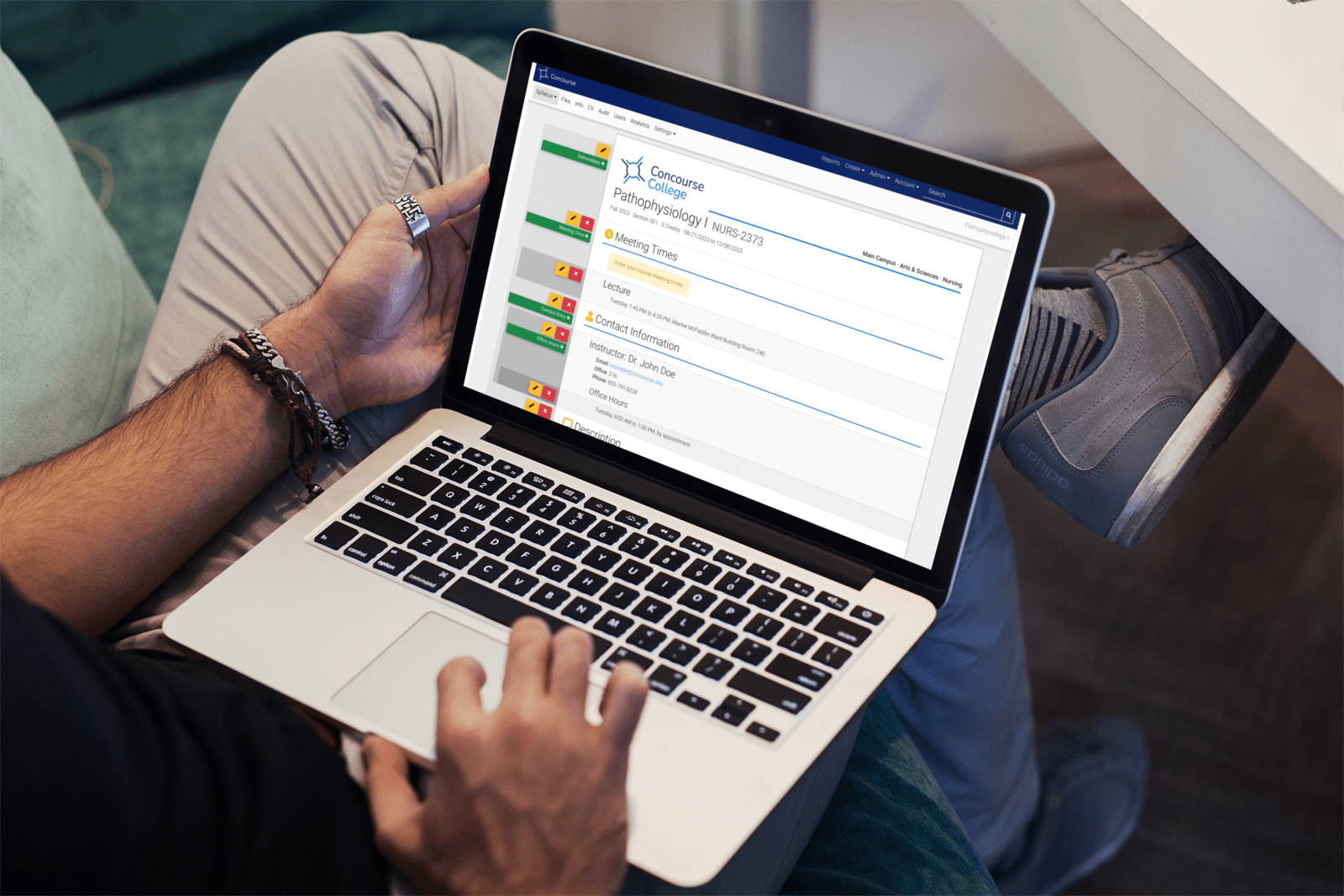Accessibility and syllabus management
Delivering syllabi while ensuring equal access to all students
Compliance with Higher Education legislation, like the Technology, Education, and Accessibility in College and Higher Education Act (TEACH Act), is fully supported on the Concourse platform. Institutions can confidently operate knowing their syllabi documents and related information technologies are accessible for everything ranging from physical impairments to cognitive/neurodivergent learners. Additionally, documentation in Concourse is consistent with the standards for technical and functional performance criteria issued by the Rehabilitation Act of 1973.
Your campus community will also enjoy LMS integration and single sign-on compatibility, and we ensure that they have access in multiple formats that best fit their needs. Concourse is 100% WCAG 2.1 AA compliant and meets all Revised Section 508 standards.
Concourse users also enjoy the peace of mind that comes with knowing their institution is protected from legal and financial liabilities that often accompany non-compliant resources. Safeguarding accessibility for your students, especially with a document as valuable as the syllabus, is non-negotiable. Inclusive access to your syllabi for your student body is as important to us as it is to you. With Concourse, you’ll know course syllabi are available to all students anywhere and at any time.
Inclusive accessibility and compliance
Inclusive accessibility and compliance

Concourse users benefit from a variety of features. Here are some of their favorites:
- Skip link - A link is provided to efficiently “skip” over navigation and other elements that are repeated across pages
- Headings - Hierarchical, logical, and descriptive section headings are used throughout to convey structure and meaning
- Contrast - All text, images of text, and iconography have contrast ratios of at least 4.5:1
- ARIA - Accessible Rich Internet Applications (ARIA) are used to describe the identity, role, operation, and state of interface elements
- Non-text Content - Alternate or contextual text is available for all non-text elements
- Tables - Tables are captioned and used only for tabular data. Cells are associated with headers to ensure proper reading order and understanding

Concourse offers many variables ensuring user connection to syllabi:
- Equal access to important course information for all students
- Editing controls and a simple html editor, preventing accidental addition of non-accessible text to syllabi
- Protection from legal and financial liabilities that accompany non-compliant resources
- Editing controls and a simple html editor, preventing accidental addition of non-accessible text to syllabi

